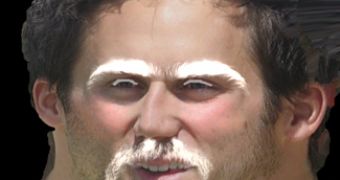SIGGRAPH 2008 was the stage where Microsoft unveiled its own visions over how video, graphics and photography editing will continue to evolve. Traditionally an event focused on interactive techniques, but also animation and visual effects technology, SIGGRAPH 2008 manages to deliver a sneak peek at the innovations cooking in Microsoft Research. The Redmond company, spending a multi-billion annual budget on research and development, had some aces tucked away up its sleeve in terms of computer graphics and visual effects innovations, and offered an insight into three projects at SIGGRAPH 2008.
"Within the industry, SIGGRAPH is viewed as the launching pad for innovations in computer graphics, a space that is very important to Microsoft. Graphics are extensively used nowadays, right from computer games and data exploration to image-based modeling and photo editing. SIGGRAPH features a lot of new, experimental work in the graphics field. Breakthroughs in computer graphics that are unveiled at SIGGRAPH frequently end up in Microsoft's image editing products. Microsoft Research is dedicated to advancing the state of the art in graphics and has remained at the forefront of innovation in the graphics space," revealed Richard Szeliski, principal researcher in the Interactive Visual Media group at Microsoft Research.
The "Finding Paths through the World's Photos" project is focused on building navigable 3D spaces out of 2D photographs, in an approach similar to what Microsoft already offers with PhotoSynth. The technology is set up to analyze large collections of photos and identify common paths shared by the images. This permits a three dimensional environment to be created out of the photographs available, enabling user navigation across "orbits, panoramas, canonical views, and optimal paths between views," according to Microsoft.
"In this paper, we look at the possibilities of enhancing contrast in photographs in a way that lets the user control whether details or global properties are modified. This study explores the potential of controlling visual qualities such as the tonal balance and the amount of detail. Earlier techniques have not historically had the ability to control the scale at which filtering effects can be applied. The objective of our new algorithms is to achieve very fine-scale detail control in photographs, without producing what we call "halo artifacts" near the edges of objects in the rendered image," Szeliski stated about the "Edge-Preserving Decompositions for Multi-Scale Tone and Detail Manipulation" paper.
Yet another Microsoft Research project deals with innovative video editing techniques. "Unwrap Mosaics: A new representation for video editing" is an initiative set up to allow the unwrapping of a 3D video image to a 2D space, dubbed mosaic. At this stage in its development, the project allows for a basic level of editing, like adding eyebrows and moustache to an actor.
"By modelling the image-formation process as a 2D-to-2D transformation from an object's texture map to the image, modulated by an object-space occlusion mask, we can recover a representation which we term the "unwrap mosaic". Many editing operations can be performed on the unwrap mosaic, and then re-composited into the original sequence, for example resizing objects, repainting textures, copying/cutting/pasting objects, and attaching effects layers to deforming objects," reads an excerpt from the description of Unwrap Mosaics.

 14 DAY TRIAL //
14 DAY TRIAL //